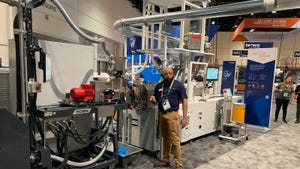October 13, 2016

As developed economies settle into modest growth patterns for the foreseeable future and innovation in the medical technology space increasingly focuses on cost reduction, emerging markets represent a significant business opportunity for the healthcare sector. One of those markets that is getting a lot of attention right now is Iran.
|
Image of Tehran courtesy Shahrokh |
According to business intelligence company Frost & Sullivan (Austin, TX), improving Iran’s healthcare sector will be a top priority for the government in a post-sanctions era. The country’s Sixth Development Plan, which lays out a roadmap for 2016 to 2020, will set aside more than $25 billion for the healthcare industry. The funds will be used to construct and renovate hospitals, laboratories and medical clinics; build imaging centers for cancer and dialysis patients; and develop medical tourism.
“Since sanctions were lifted, over 70 European and Asian companies have expressed their interest to invest at Iran’s healthcare sector. In fact, its geographical position, cost-effective healthcare system, large population, tourism opportunities and growing advanced medical facilities will make Iran a medical hub in the region within a decade,” said Ali Mirmohammad, Sr. Consultant & Business Development Manager, MENASA, Iran.
The Iran 2025 Outlook, which posits that “the Islamic Republic of Iran will be a developed country by 2025,” will bolster this growth by encouraging imported technology, foreign partnerships, tax exemptions, secure money transactions, protection and extendable residence permits for workers and their families, among other measures, notes Frost & Sullivan. The medical device sector, in particular, is especially promising, according to the business consultancy: Worth more than $ 1.8 billion in 2015, the segment has seen demand double despite the impact of sanctions on product quality.
While nearly 90% of disposable products and 60% of general medical devices come from domestic sources, more than 80% of advanced devices, such as imaging, analyzers, hemodialysis machines, and dental and optical equipment, are imported, primarily from Germany, the Netherlands and the United Kingdom. Although U.S. sanctions against Iran did not apply to most common medical devices, American companies have not tried very hard to penetrate the market for various political and financial reasons, notes global regulatory consultancy Emergo (Austin, TX). That may change in the years ahead.
The lack of local manufacturing plants in Persian Gulf countries, Azerbaijan, Armenia, Turkmenistan, Kyrgyzstan, Tajikistan, Iraq, Afghanistan, Syria, Lebanon, Yemen as well as parts of the African continent presents a strong opportunity for foreign investors to target these markets through partnerships with local Iranian manufacturers, notes Frost & Sullivan. Iran hopes to triple the export of medical devices, reaching a value of more than $100 million in the next three years, through joint ventures with well-known brands.
“Broad prevalence of strokes, neurological diseases, diabetes, cancers, cardiovascular diseases and obesity is expected to expand the demand for devices,” noted Mirmohammad. “Hearing aids, wheelchairs, walkers, blood pressure and glucose monitors for the disabled and elderly will also be in demand as their demographic expands.”
The medical device market is expected to surpass $1 billion by 2017.
Companies considering entering Iran’s market—one of the largest in the Middle East—should consider the following key points, according to Emergo:
Ask your distributor how much of the country he covers. Iran is nearly 2.5 times the size of Texas; Tehran is only one part of the market.
The euro is the preferred currency. Consequently, it may be expeditious to funnel money through an EU subsidiary.
Be there, but bring cash. Meaningful business relationships are nurtured through face-to-face meetings, but pack plenty of cash before you board your flight. Credit cards generally don’t work in Iran.
About the Author(s)
You May Also Like




